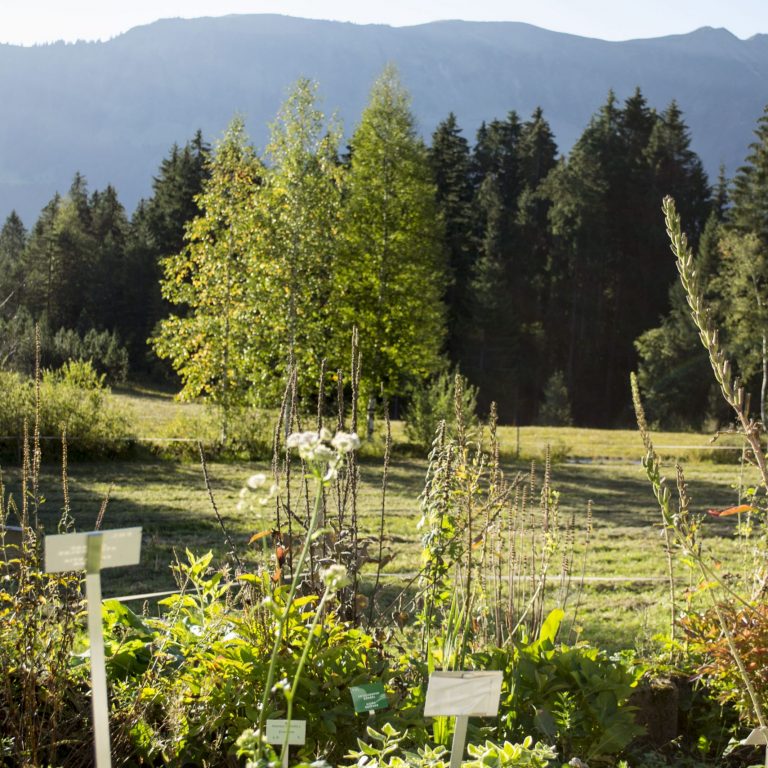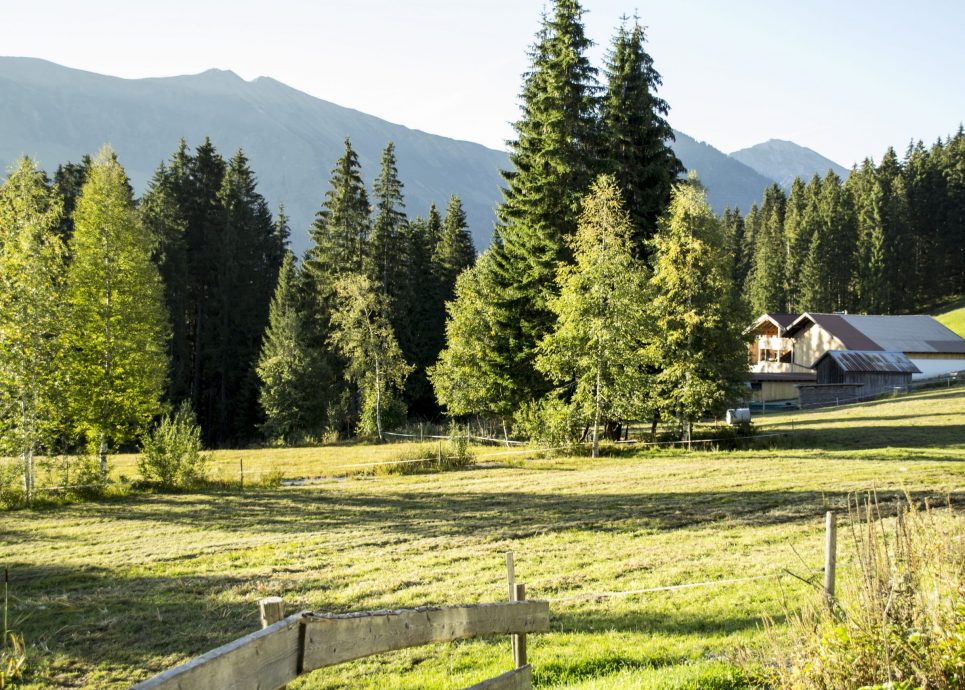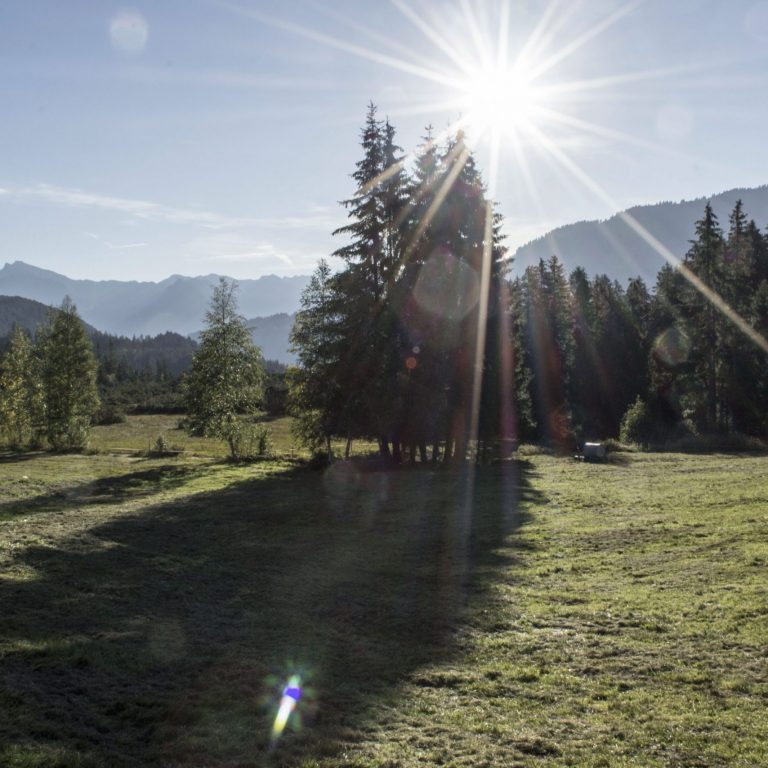


Wild orchids and cotton grass: the area’s diversity of flowers and herbs comes alive in springtime

C Hörnle Pass upland moor (c) Louisa Hieke
Natural diversity and great scenery
The Hörnle Pass is unique thanks to its location as a border pass between Kleinwalsertal and Germany. In addition, the diverse moorland, forest and meadow landscapes, featuring numerous natural highlights and great scenic views of the mountains of Kleinwalsertal, also make it special.
The best place to start the tour is directly at Gasthof Hörnlepass inn, which is perfect for a cosy refreshment stop with delicious regional specialities to finish the tour. The highland cattle meat is sourced from region. These docile animals tend the high Alpine pastures in the Ifen European Protected Area. It is also well worth taking a look at the herb garden at the beginning or end of the hike and marvelling at the diversity of native herbs represented.
From the inn, hike in the direction of the national border, which the tour crosses after just a few minutes walking (and will be crossed back and forth several times during our hike). With its upland moor system, the area around the Hörnle Pass boasts the largest moor areas in Kleinwalsertal and, along with the rare animal and plant species that occur there, a biotope of international importance. This entire upland moor system was formed after the end of the last ice age by deposits in glacial lakes and thus offers an insight into the changes that have taken place in the landscape over the last millennia. An upland moor is characterised, among other things, by the fact that it is only fed by rainwater, i.e. that it is disconnected from the groundwater supply. This also means that nutrients only enter the bog from the outside via precipitation. As a result, the supply of nutrients for plants living in an upland moor like this is very low. Under these extreme conditions, only animal and plant species that are specially adapted to this particular habitat can be found here, including carnivorous plants such as the long-leaved and round-leaved sundew, rare orchids such as the broad-leaved marsh orchid or the willow gentian, which flowers in late summer.
In addition to passing through the special moor system, the path along the forest road from the Hörnle Pass also alternates between coniferous forests, open agricultural areas and mysterious-looking moorland. Along the way, there are several centuries-old maple trees that provide a habitat for numerous birds, insects and other species. The trees bear witness of old mountain agriculture practices. The trees serve as protection for cattle when grazing and as boundary markers. A particularly old specimen just before the national border has been declared a natural monument. A scientific tree ring examination of this 19-m high and 2-m thick Methuselah revealed that the trees is over 600 years old! When the tree began to germinate in 1386, the people of Valais had just began settling the Breitachtal valley.
On the second half of the trail, it’s worth taking a small detour towards the “Waldhaus” (forest house) and then hiking back along the forest path from there. The cosy “Güütschle-Plätzle” is a comfortable area with wooden loungers that is perfect for taking a break.
If you’d prefer to walk a flatter route, then stay on the Straussbergweg trail at the “Fuchsloch Alpe” turnoff and hike back along the meadows, which are magnificently blooming especially in spring, and return by heading toward the Hörnle Pass.
Once back at the starting point, enjoy the panoramic views once more and reflect on the many impressions of nature and the scenery.

Walser Omgang hike - Discover the hidden. A regenerating half-day tour
12.45 km
3.8 h
mittel

| Difficulty: | mittel |
|---|---|
| Distance: | 12.45 km |
| Ascent: | 320 m |
| Descent: | 320 m |
| Duration: | 3.8 h |
| Deepest point: | 943 m |
| Highest point: | 1211 m |
| Condition: |
|
| Experience: |
|
| Landscape: |
|
Walser Omgang hike - Discover the hidden. A regenerating half-day tour
Start of tourRiezlern
End of tourRiezlern
DescriptionOne good thing about nature is, that it shows its observer a different aspect each time he looks at it.
Best season| JAN | FEB | MAR | APR | MAY | JUN |
| JUL | AUG | SEP | OCT | NOV | DEC |